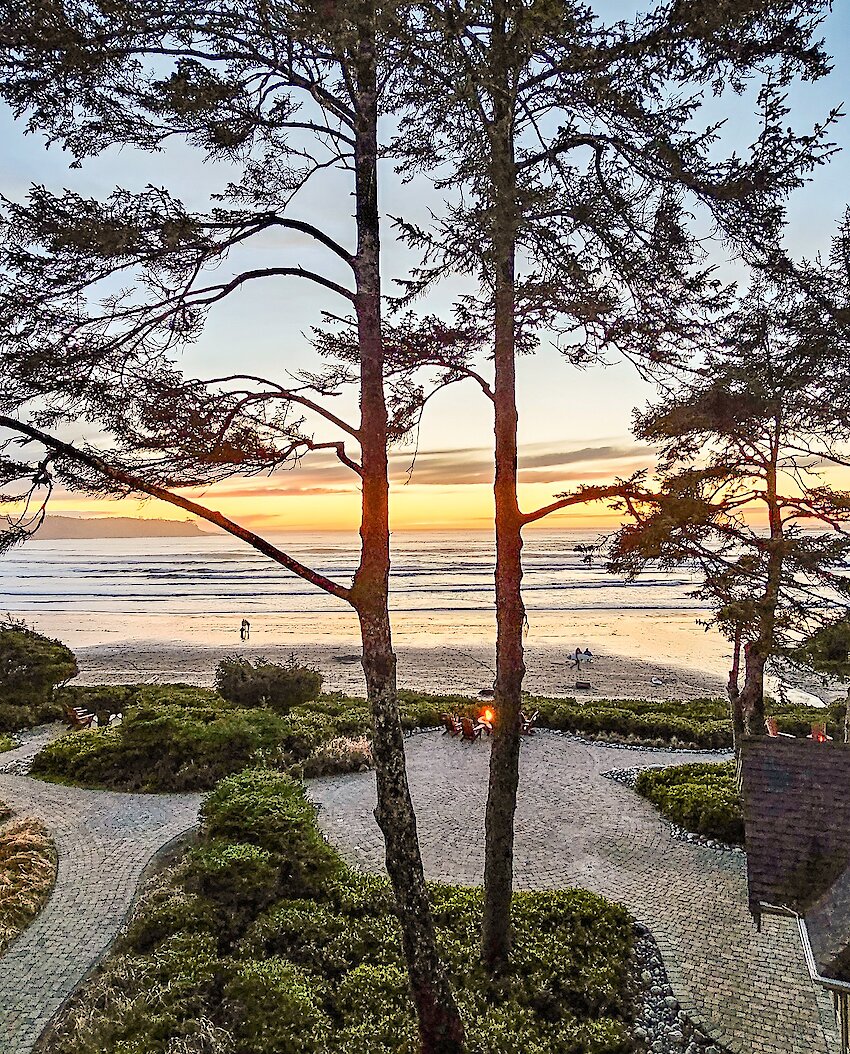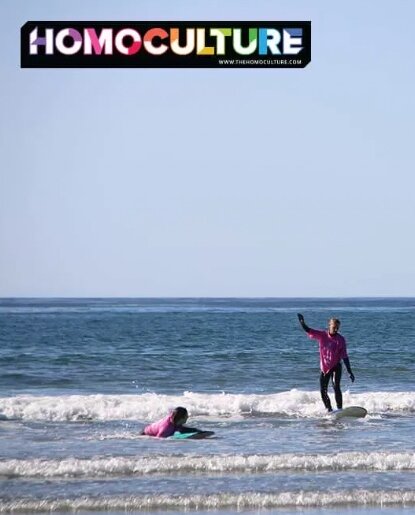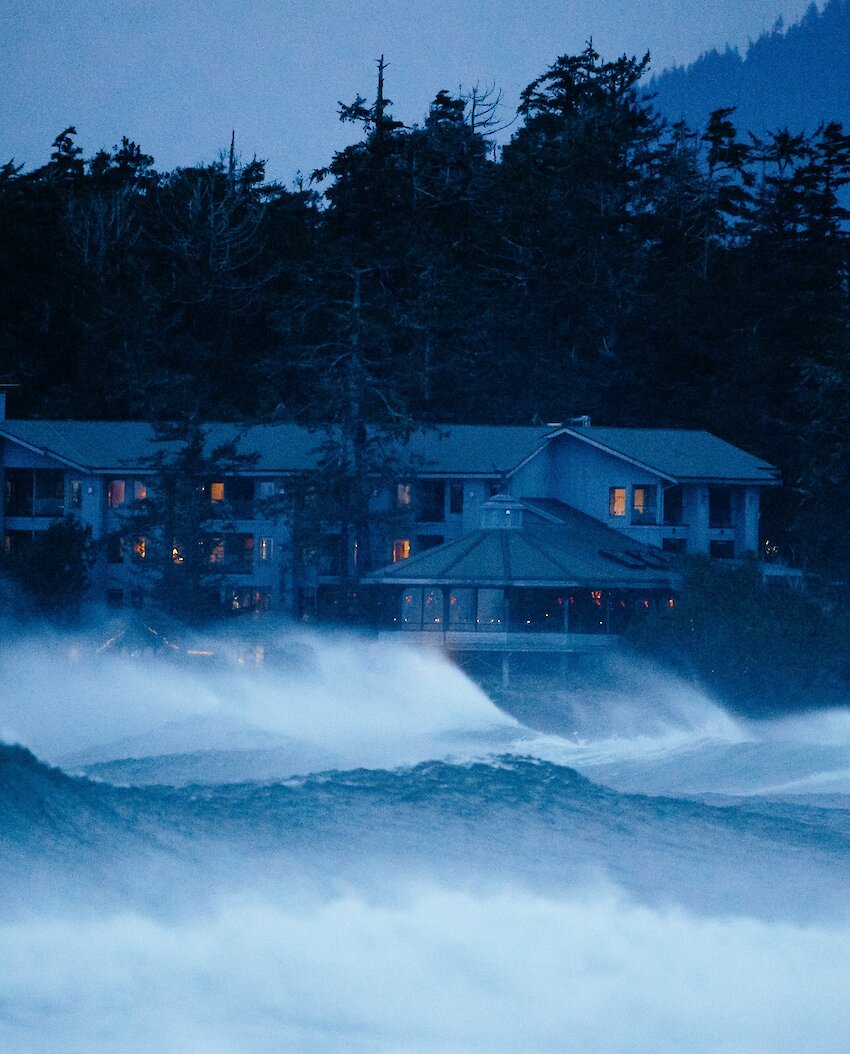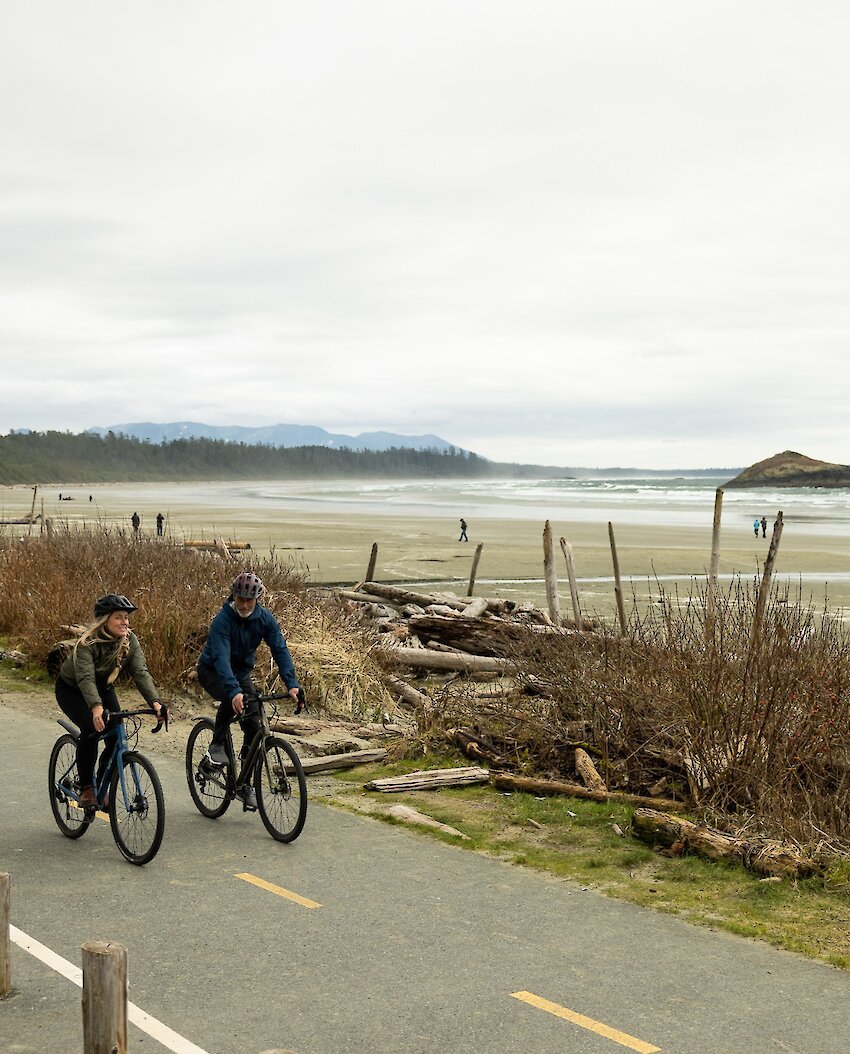Storm Tourism Is Surging—and Vancouver Island Is Leading the Charge - AFAR
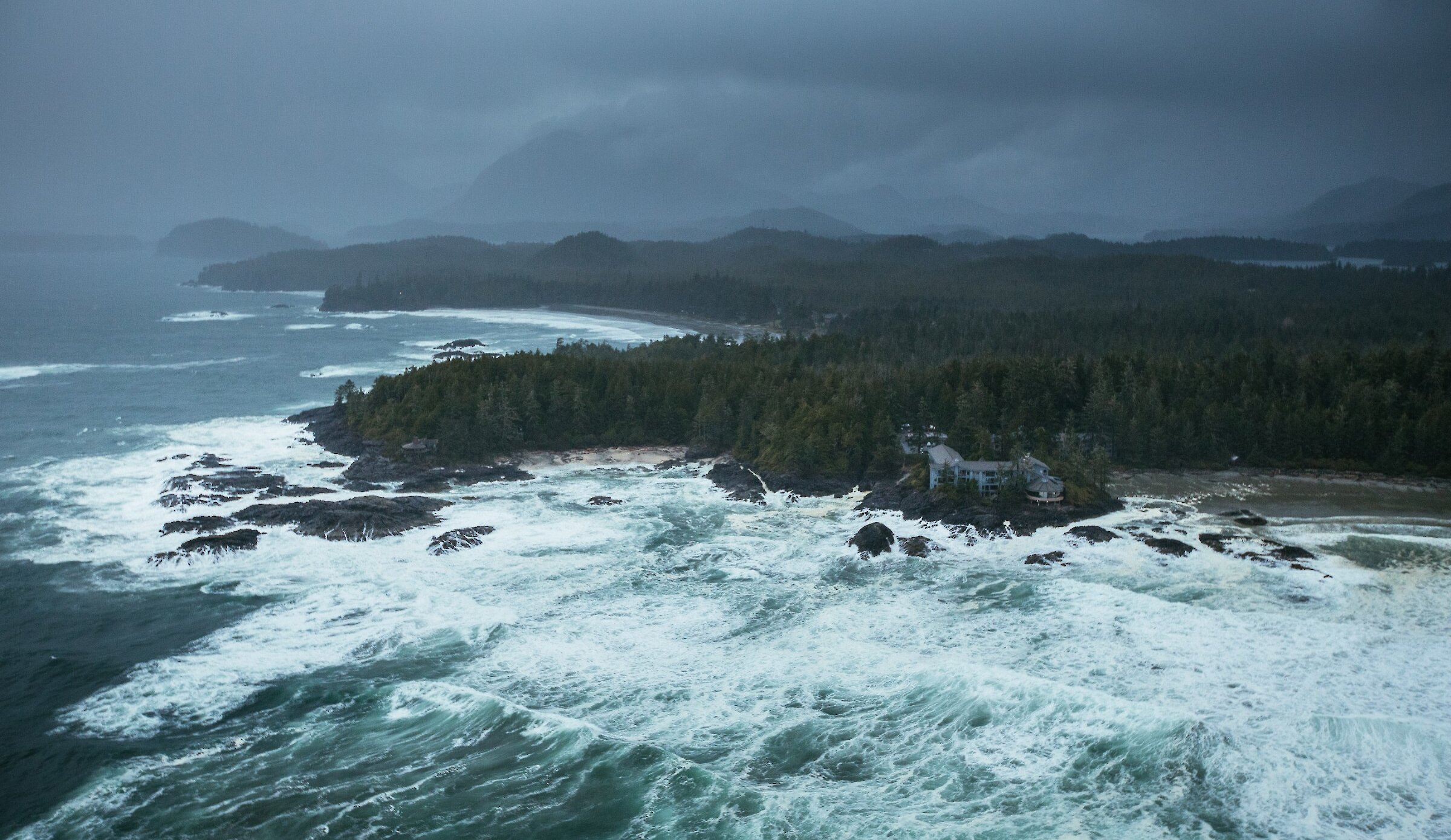
The Wickaninnish Inn on Chesterman Beach
Jeremy Koreski
British Columbia’s wild winter weather makes it the epicenter of a growing travel trend.
by Alexandra Marvar
For some travelers, the quintessential winter getaway looks a lot like a pilot for The White Lotus: swaying palms, striped parasols, cerulean seas, gaudily garnished poolside cocktails. But a growing tourism segment is veering the other way—toward the unpredictable, awesome brute strength of Mother Nature. “Storm watchers,” as they’re sometimes called, think the perfect beach day involves donning full-body rain gear and venturing out in a downpour as waves the height of two-story buildings slam 30-foot logs against boulders, causing the huge pieces of wood to reverberate like tuning forks.
“People are looking for experiences that aren’t just lying on the beach in Corfu,” says Charles McDiarmid, maître de maison of the Wickaninnish Inn in Tofino, British Columbia. “To escape to a place where Mother Nature is really in control, the rain comes down sideways, the winds blow, the waves are crashing—people come here for that.”
Storm watching isn’t a new idea: In 1854, Henry David Thoreau appointed himself “inspector of snow storms and rain storms” in Walden, while the southern Oregon town of Bandon has been calling itself the “storm-watching capital of the world” since at least 2008. On Vancouver Island, storm watching has become a foundational visitor experience. That’s thanks in part to unique weather conditions: The “Pineapple Express”—an atmospheric river that carries tropical moisture from Hawai‘i to British Columbia—crashes into Western Canada’s chilly Coast Mountains, resulting in heavy rains. Add to that the Bering Sea’s seasonal contribution of 75-mile-per-hour winds and 36-foot waves, and this stretch of coastline becomes a front-row seat to nature’s drama.
It’s also partially due to the efforts of McDiarmid. His family came to the area in the 1950s, when the only routes from the city of Victoria were logging roads, and his father was the area’s lone doctor. At their house on a windswept 1.6-mile stretch of sand, pine forest, and jagged rock called Chesterman Beach, in what’s now the Clayoquot Sound UNESCO Biosphere Region, massive storms “were just a natural part of our everyday winter experience,” he says.

Relaxing in a beachside room at the Tin Wis Resort
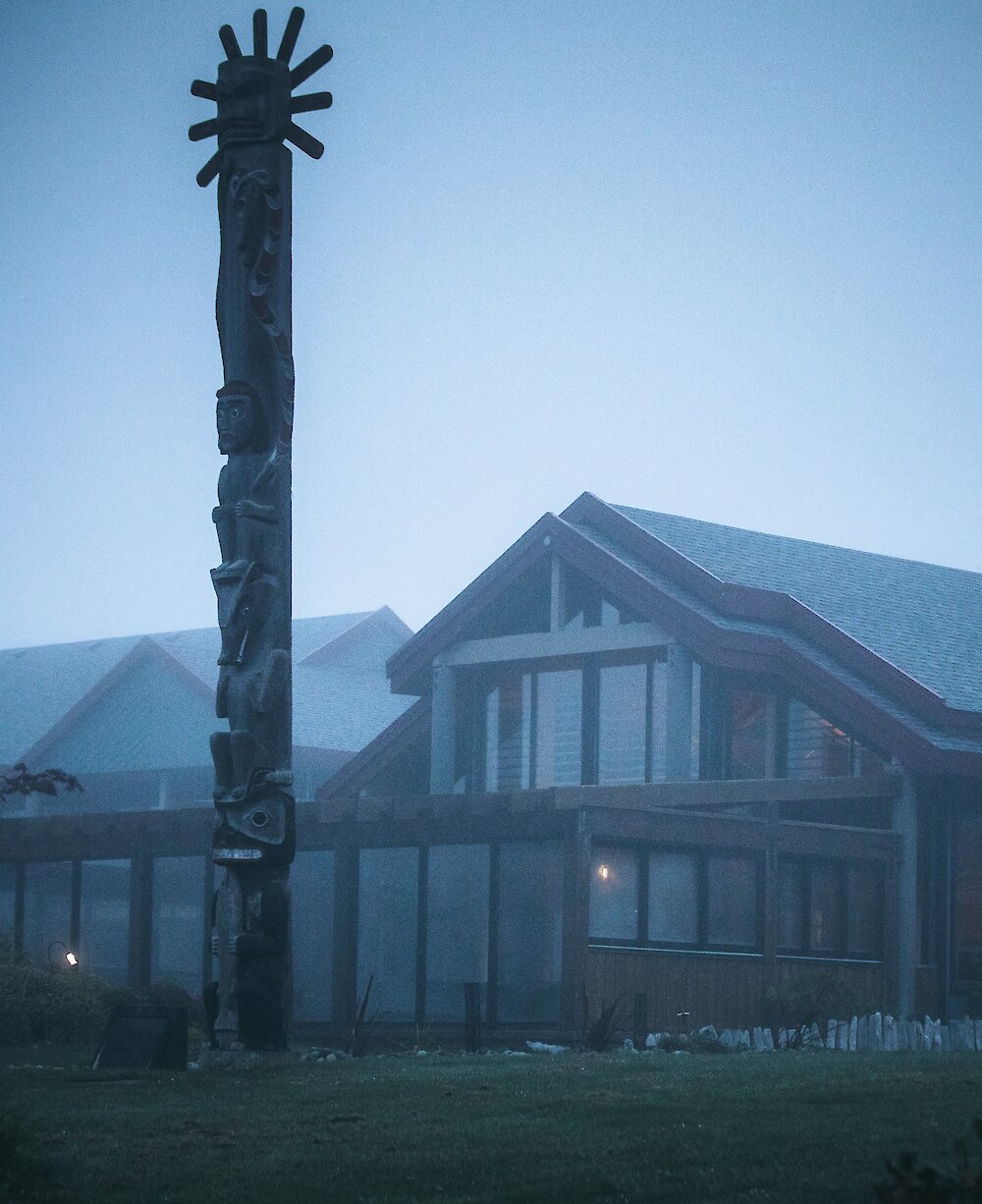
One of two totem poles on the property at Tin Wis.
